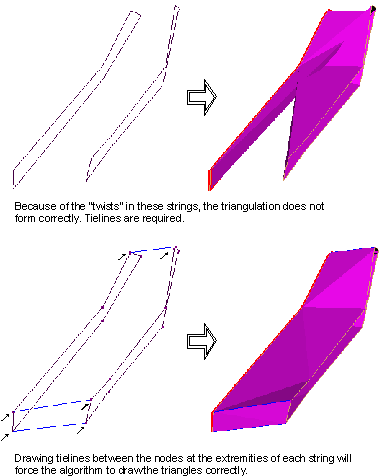Using tie-lines to
resolve inconsistent triangulation
Tie-lines are line segments that you draw between the nodes on strings. They are the means by which you "force" the wireframing function to triangulate in a particular way. You will only need to use them when the triangulation algorithm is unable to form triangles correctly.
It is up to you to decide whether or not the shape formed by the triangulation is correct. The Validation function helps by locating intersecting triangles and surfaces that are not closed. However, you must still validate the way the triangles have formed by visually checking the shapes on the screen. When they have not formed correctly, you should add Tie-lines and then re-triangulate until you are satisfied that all the triangulation has formed correctly.
Initially, the best place to add tie-lines is at the extremities of the strings. It may be necessary to add further tie-lines if the triangulation still doesn't form correctly.
To re-triangulate, the first thing to do is press Ctrl+Z to undo the last one or two steps in the triangulation process so you can see the strings.

When you can create tie-lines you are creating strings with Snap To Point mode active. Tie-lines are saved as a String file which is loaded as a display layer which is separate to the triangulation (wireframe) display layer.